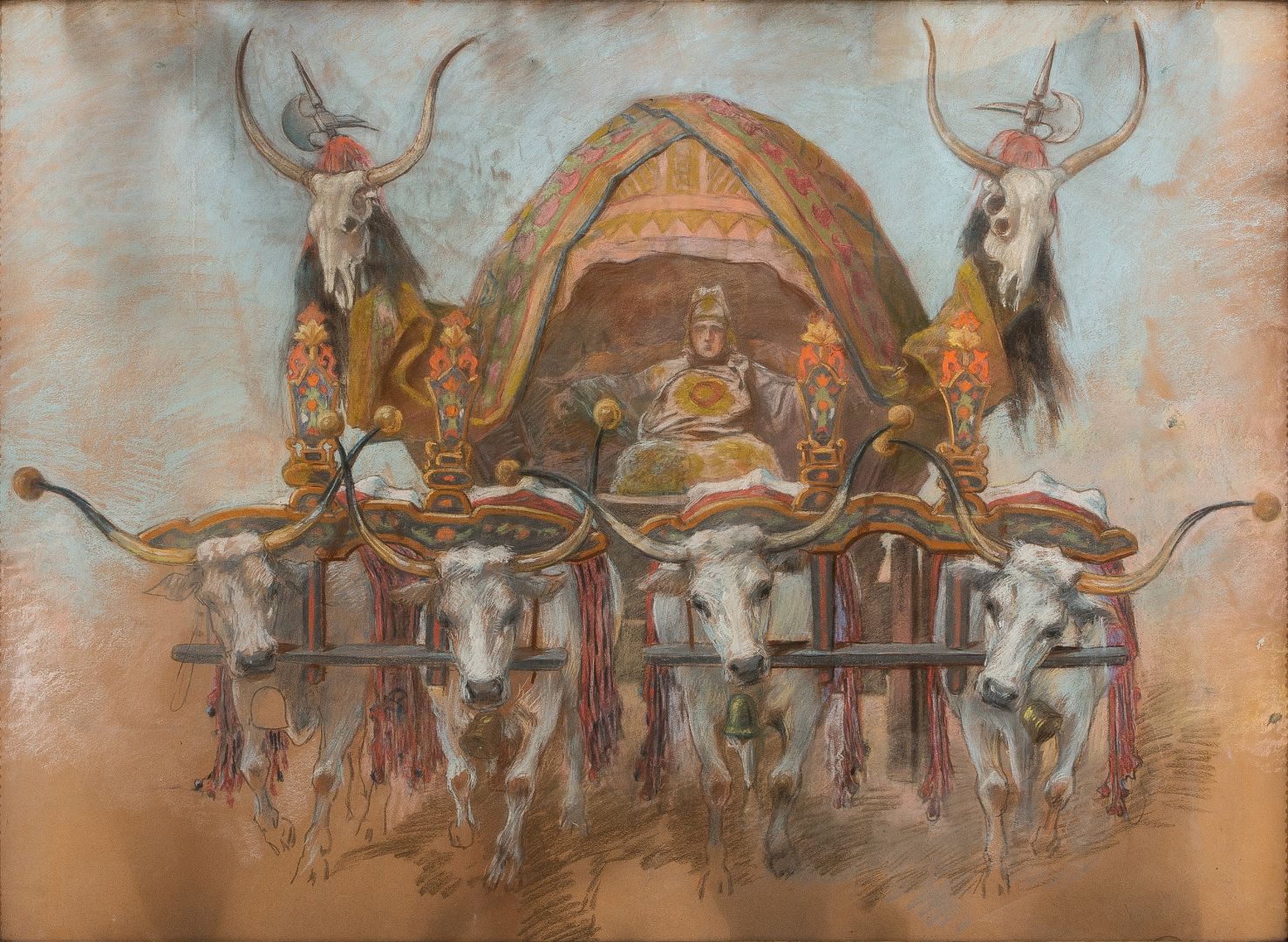Hall 2 - 2. view
The Mother Superior (Sketch for the Entry of the Hungarians)
FESZTY, ÁRPÁD (1856–1914)
The Mother Superior (Sketch for the Arrival of the Hungarians), 1891–1894
pastel on card, 94x126 cm; unmarked
Fine Arts Collection, Inv. No.: 82.55.
The cyclorama of Árpád Feszty at Ópusztaszer is one of the most well-known masterpieces of Hungarian fine arts. The genre of the cyclorama, which seeks to establish an optical illusion consisting of a foreground made with real objects and the painting in the background, was created during the late 18th century. Árpád Feszty first saw a cyclorama in Paris and it left such an impression on him that from 1891 onwards he began to consider painting a panorama himself. As the theme for his work, he chose the arrival of the Hungarians, on behalf of the recommendation of his father-in-law, Mór Jókai and due to the fact that the country was about to celebrate the upcoming millennium of this major historical event.
Lengthy studies preceded the implementation of the idea, which also gained the support of several officials. Following the visit of the Verecke Pass and research on the clothing and the weaponry of the era, the composition that served as the basis for the cyclorama was created in 1892. The creation of cyclorama, which is unique to this genre in Hungary, took two years to complete. The main concept and the details were developed by Feszty; however, several people took part in the implementation, including László Mednyánszky, Béla Spányi, Ignác Ujváry, Celesztin Pállya, Henrik Papp, Ferenc Olgyay, and his wife, Róza Jókai.
The cyclorama follows the European size format (15x115 metres) and depicts the arrival of the Hungarians to the Carpathian Basin through several scenes, with the use of over 2000 individual figures, in a romanticised interpretation characteristic of the turn of the century. It begins with the image of Árpád and the other chieftains as they look at their new homeland. This is followed by the composition of the chieftain’s wife and her entourage. The sketch from Miskolc also shows this scene, meaning it was finalized and not altered any further. The pastels give a velvety smooth texture to the carriage towed by four oxen. The tented wagon is covered in rugs, on which the wife of Árpád sits with dignity, wearing a white embroidered dress. The two sides of the wagon are decorated with two horse-tailed banners with dried oxen skulls. According to the old beliefs, these were used to ward off evil spirits. What makes the composition stand out is the fact that when viewed as a whole, the wagon resembles an elderly woman in a headscarf. Feszty aimed to evoke Emese, the great-mother of the Árpád dynasty through such symbolism.
The Feszty cyclorama was a huge success and remained open as a permanent exhibition in Budapest for a long time. It was even invited to the London World Fair. Following its restoration in 1995, it became the main attraction of the National Historical Memorial Park in Ópusztaszer.
The sketch of the cyclorama was purchased by the Herman Ottó Museum in 1982 from the widow of the late esteemed art collector Dr. Kálmán Tompa.
Andrea Pirint
